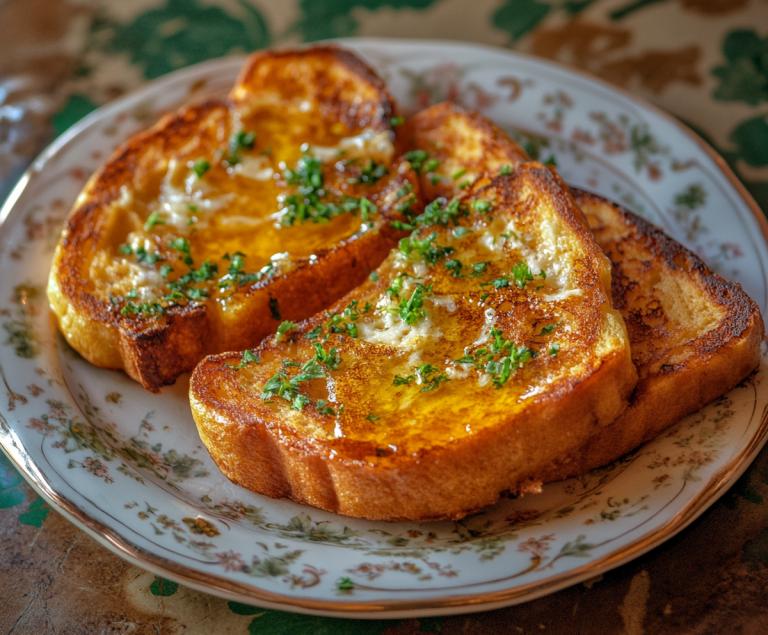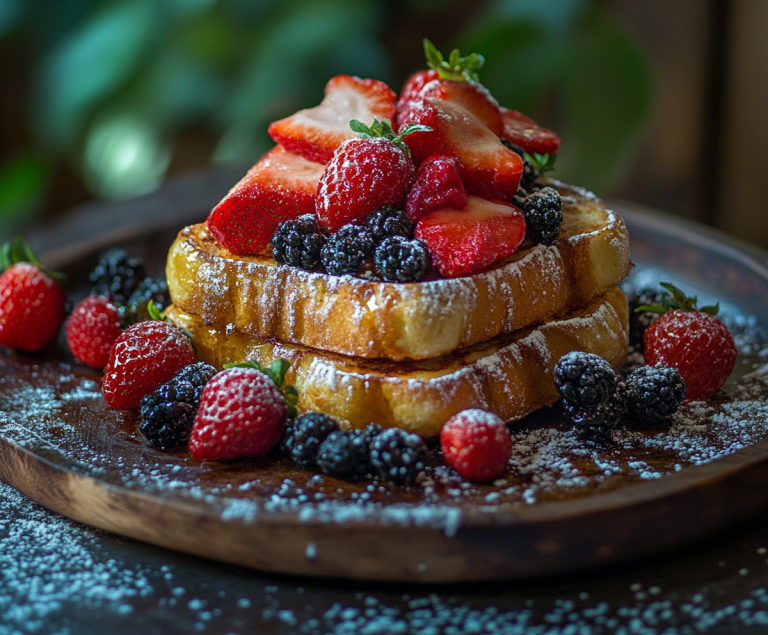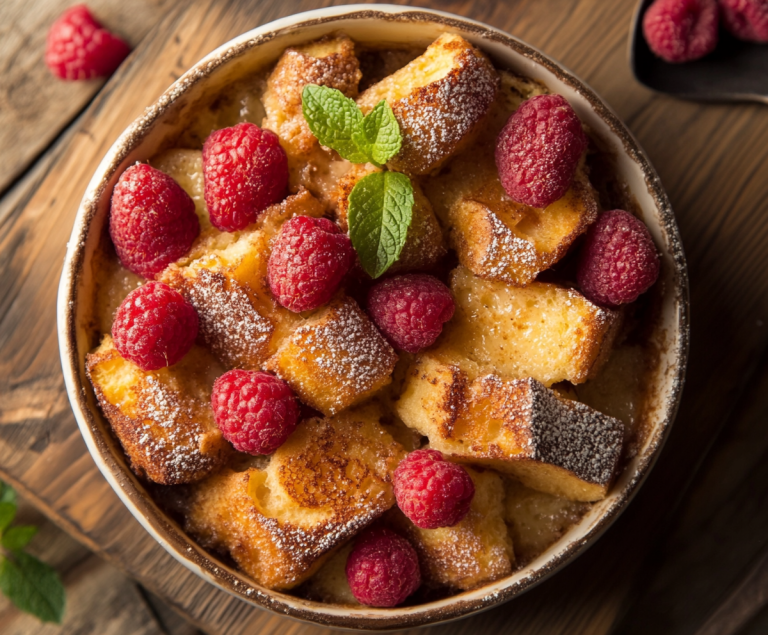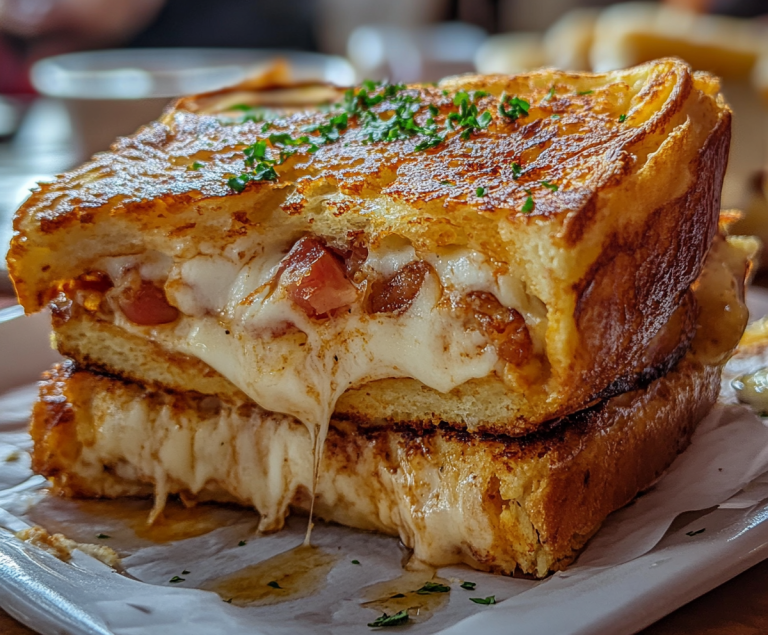French toast is a timeless breakfast favorite that brings comfort and joy to the table. Its golden, crispy exterior and soft, custard-like interior make it a delightful treat for any morning. Whether you’re preparing a leisurely weekend brunch or seeking a quick weekday breakfast, French toast offers versatility and simplicity. The beauty of this dish lies in its ability to transform basic ingredients into a satisfying meal. With just a few pantry staples, you can create a dish that’s both delicious and comforting. This guide will walk you through the process of making French toast, from selecting the right ingredients to serving suggestions, ensuring a delightful experience from start to finish.
Ingredients Needed
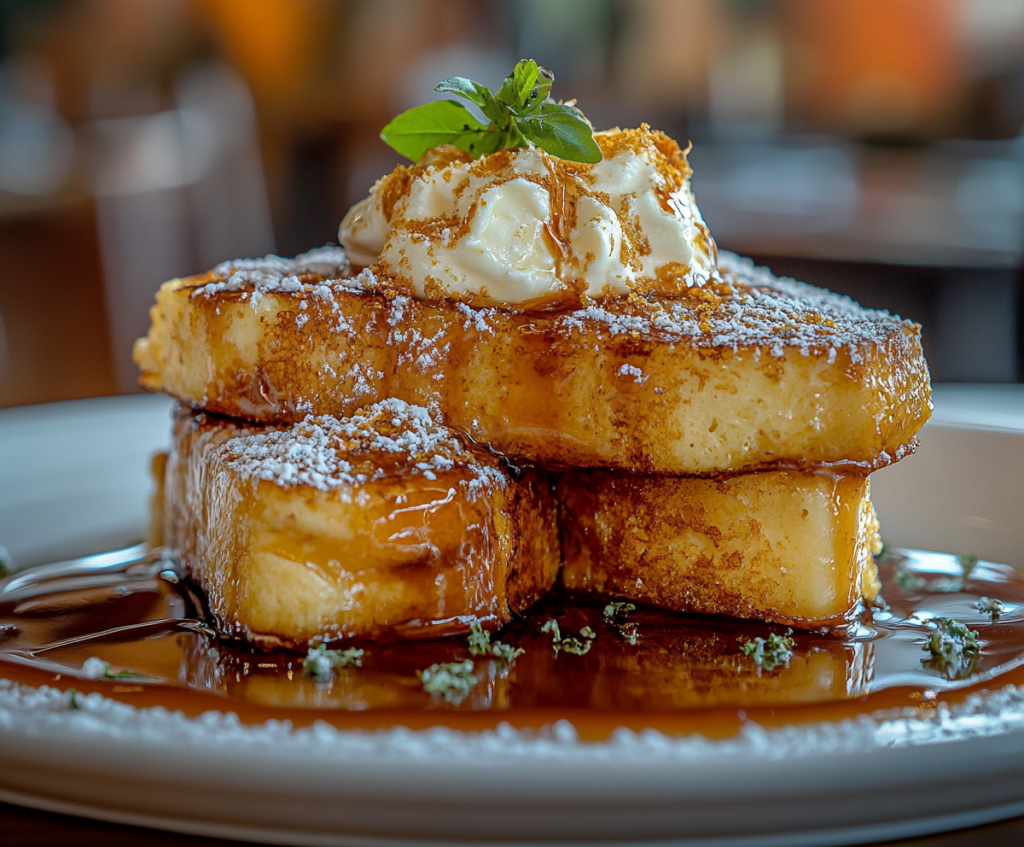
To create the perfect French toast, you’ll need the following ingredients:
| Ingredient | Quantity | Calories (approx) |
|---|---|---|
| Eggs | 2 large | 140 kcal |
| Whole milk | ½ cup | 75 kcal |
| Bread slices (thick) | 4 slices | 280 kcal |
| Sugar | 1 tablespoon | 50 kcal |
| Vanilla extract | 1 teaspoon | 12 kcal |
| Ground cinnamon | ½ teaspoon | 3 kcal |
| Salt | A pinch | 0 kcal |
| Butter (for cooking) | 1 tablespoon | 100 kcal |
Total per serving (approx): 165 to 200 kcal, depending on toppings and bread type.
These ingredients are commonly found in most kitchens, making French toast an accessible and convenient option for breakfast. The combination of eggs, milk, and spices creates a flavorful custard that enhances the bread’s texture and taste. Using thick slices of bread ensures that the toast holds up well during cooking and provides a satisfying bite. The addition of sugar, vanilla extract, and cinnamon introduces sweetness and warmth, elevating the overall flavor profile.
Step-by-Step Cooking Instructions
In a shallow bowl, crack the eggs and whisk them until well-beaten. Add the milk, sugar, vanilla extract, ground cinnamon, and a pinch of salt. Whisk the mixture until all ingredients are fully incorporated, creating a smooth custard base.
Heat a non-stick skillet or griddle over medium heat and add a small amount of butter to coat the surface. While the skillet heats up, dip each slice of bread into the egg mixture, ensuring both sides are evenly coated. Allow the bread to soak for a few seconds on each side to absorb the custard.
Place the soaked bread slices onto the preheated skillet. Cook each side for approximately 2 to 3 minutes or until golden brown and slightly crispy. Adjust the heat as necessary to prevent burning and ensure even cooking.
Once cooked, remove the French toast from the skillet and place it on a serving plate. Serve hot with your choice of toppings.
These steps provide a straightforward approach to making French toast. The key to success lies in the quality of the ingredients and the cooking technique. Using fresh eggs and milk ensures a rich custard, while selecting thick slices of bread allows for optimal soaking and texture. Cooking over medium heat ensures that the toast cooks evenly, achieving the desired golden-brown color without burning.
Tips for Customizing the Recipe
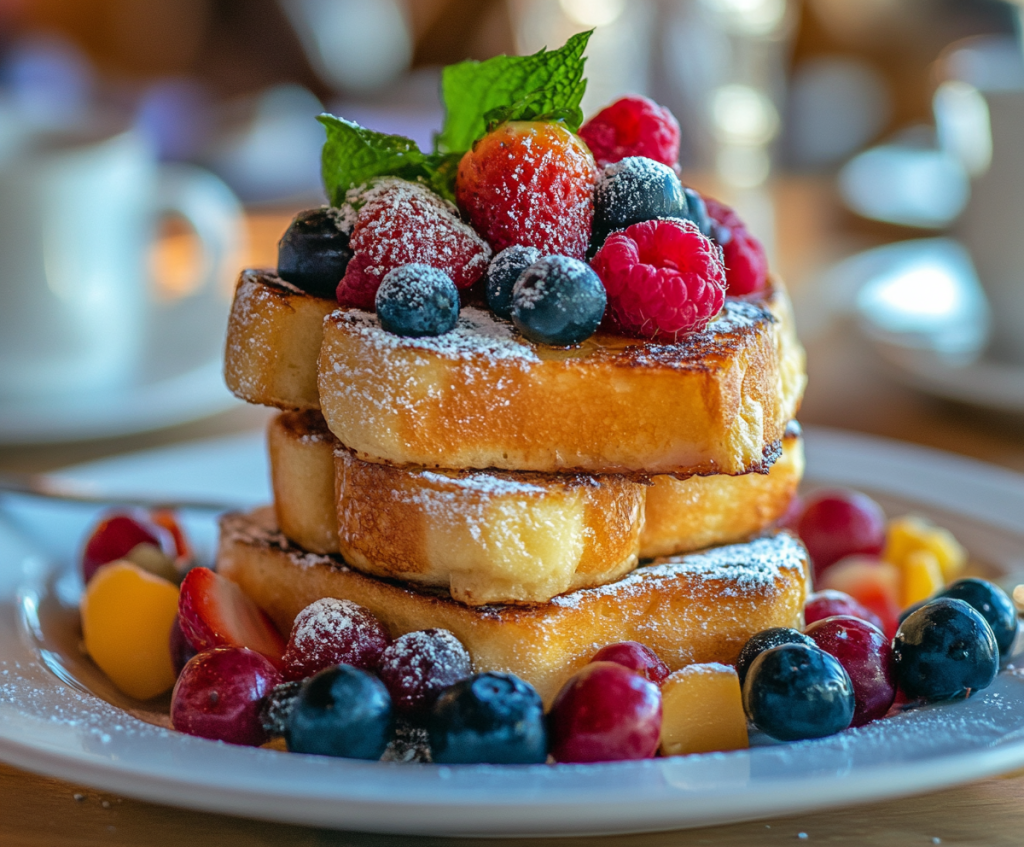
French toast is highly adaptable, allowing you to tailor it to your preferences. Here are some ideas to customize your French toast:
Experiment with different types of bread such as brioche, challah, or sourdough. Each variety offers unique flavors and textures, enhancing the overall experience.
Add a splash of orange juice or a teaspoon of almond extract to the egg mixture for a citrusy or nutty twist. These subtle changes can transform the flavor profile of your French toast.
For a savory version, omit the sugar and cinnamon. Instead, add herbs like rosemary or thyme to the egg mixture. Top the cooked French toast with sautéed mushrooms, spinach, or a sprinkle of cheese.
Create a decadent treat by spreading cream cheese, Nutella, or peanut butter between two slices of bread before dipping them into the egg mixture. Cook as usual for a stuffed French toast delight.
For a dairy-free option, substitute regular milk with almond, soy, or oat milk. Use a plant-based butter alternative for cooking. To make it gluten-free, choose a suitable gluten-free bread variety.
These customization options allow you to personalize your French toast to suit your taste preferences and dietary needs. Whether you prefer sweet or savory, traditional or innovative, there’s a variation to satisfy every palate.
Nutritional Information
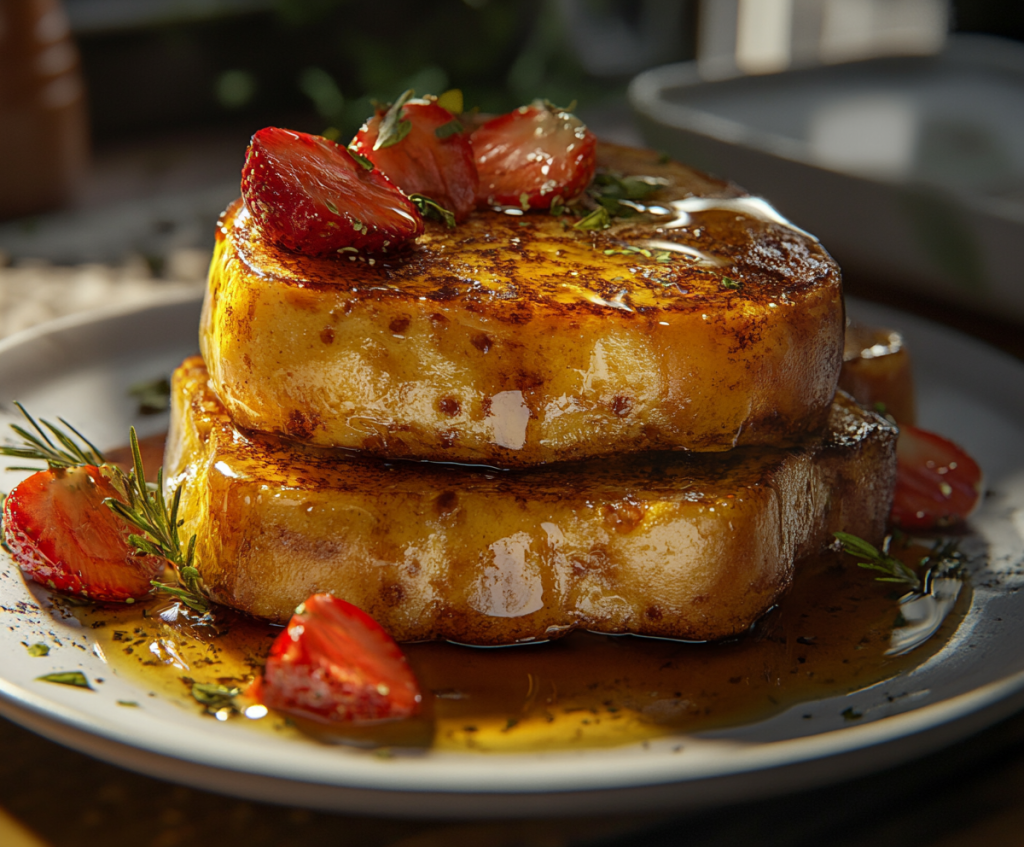
Understanding the nutritional content of your meals is essential for maintaining a balanced diet. Here’s an approximate breakdown of the nutritional values per serving of classic French toast:
Calories: 330 to 400 kcal
Protein: 10 grams
Fat: 18 grams
Carbohydrates: 30 grams
Fiber: 1 to 2 grams
Sugar: 6 to 10 grams
These values can vary based on the specific ingredients used and portion sizes. For instance, opting for whole-grain bread can increase fiber content, while using less butter can reduce fat intake. It’s important to consider these factors when preparing your French toast to align with your nutritional goals.
Serving Suggestions

Enhance your French toast experience with these serving ideas:
Classic Toppings:
Drizzle warm maple syrup over the French toast and sprinkle with powdered sugar for a traditional touch.
Fresh Fruits:
Top with fresh berries such as strawberries, blueberries, or raspberries. The natural sweetness and acidity of the fruits complement the richness of the toast.
Whipped Cream:
Add a dollop of whipped cream for a light and airy texture that balances the density of the French toast.
Nuts and Seeds:
Sprinkle chopped nuts like walnuts or almonds for added crunch and flavor.
Yogurt:
Serve with a side of Greek yogurt for a creamy contrast and an extra protein boost.
These serving suggestions not only enhance the flavor but also add visual appeal to your dish. Feel free to mix and match toppings to create your perfect French toast combination.
Conclusion
Making French toast at home is a simple and rewarding endeavor. With a few basic ingredients and straightforward steps, you can enjoy a delicious breakfast that rivals any restaurant offering. The versatility of French toast allows for endless customization, ensuring that each preparation can be uniquely tailored to your preferences. By understanding the nutritional content and exploring various serving options, you can create a meal that is both satisfying and aligned with your dietary goals. Whether you stick to the classic recipe or experiment with creative variations, French toast remains a beloved dish that brings comfort and joy to the table.



